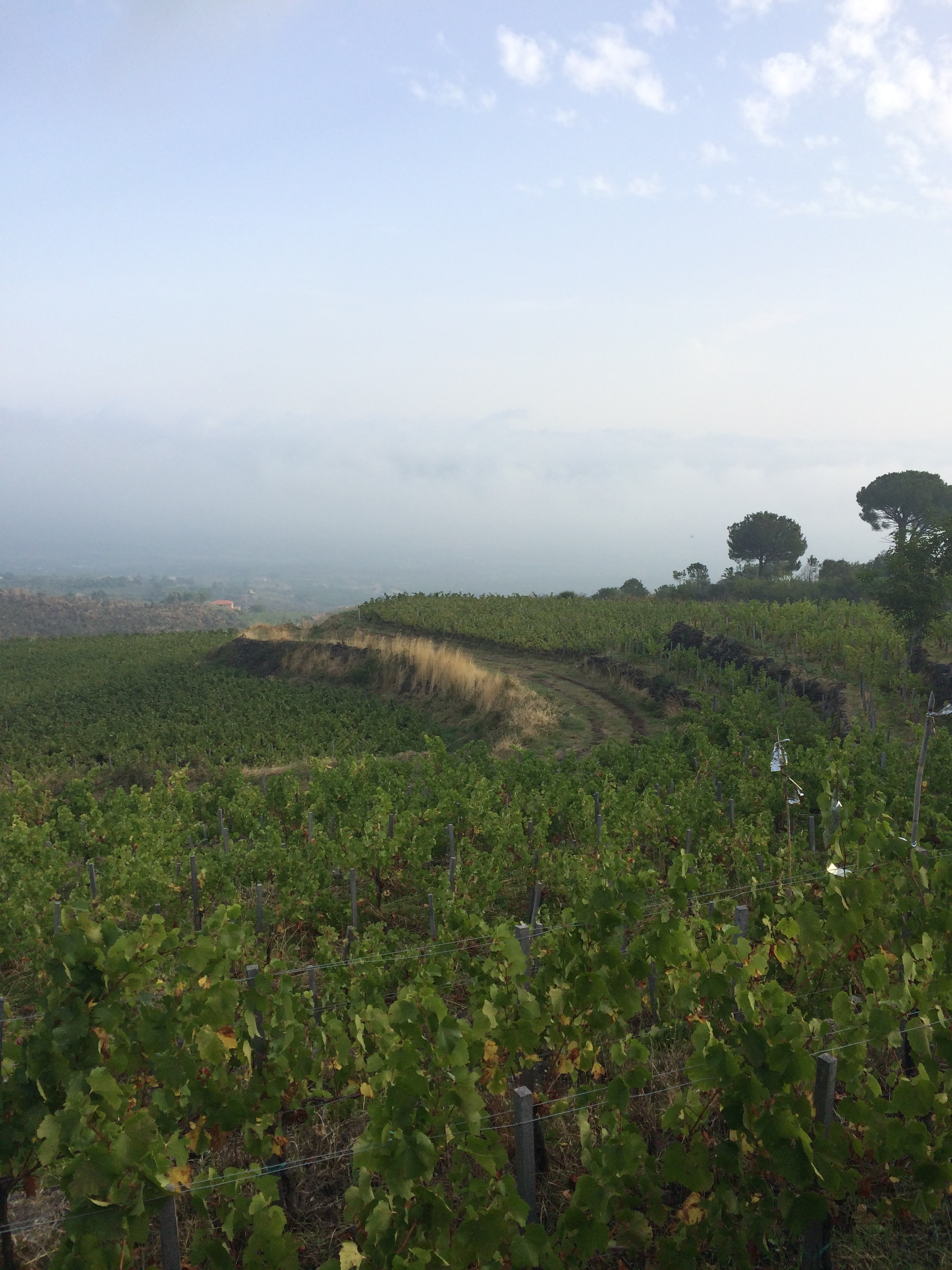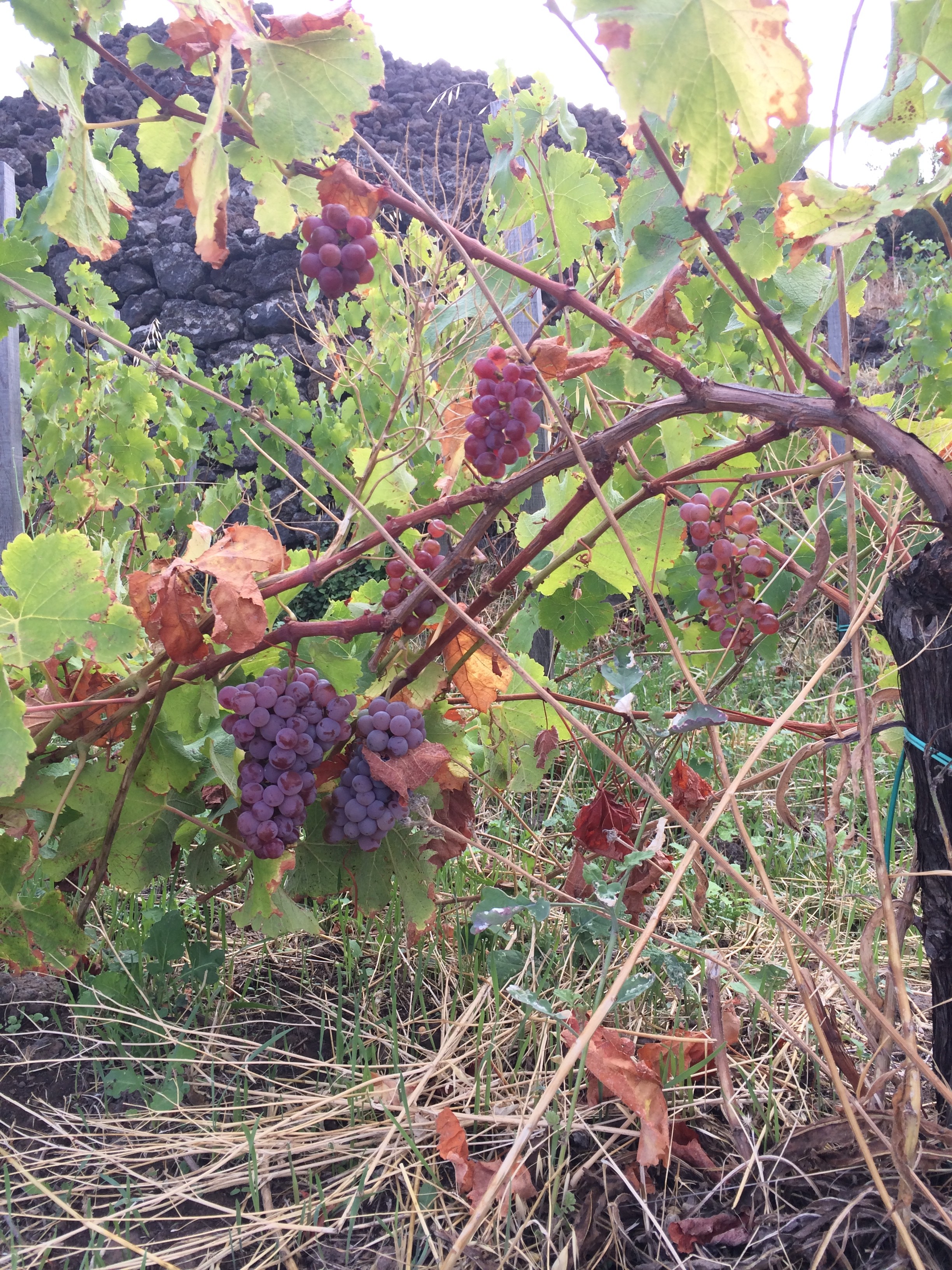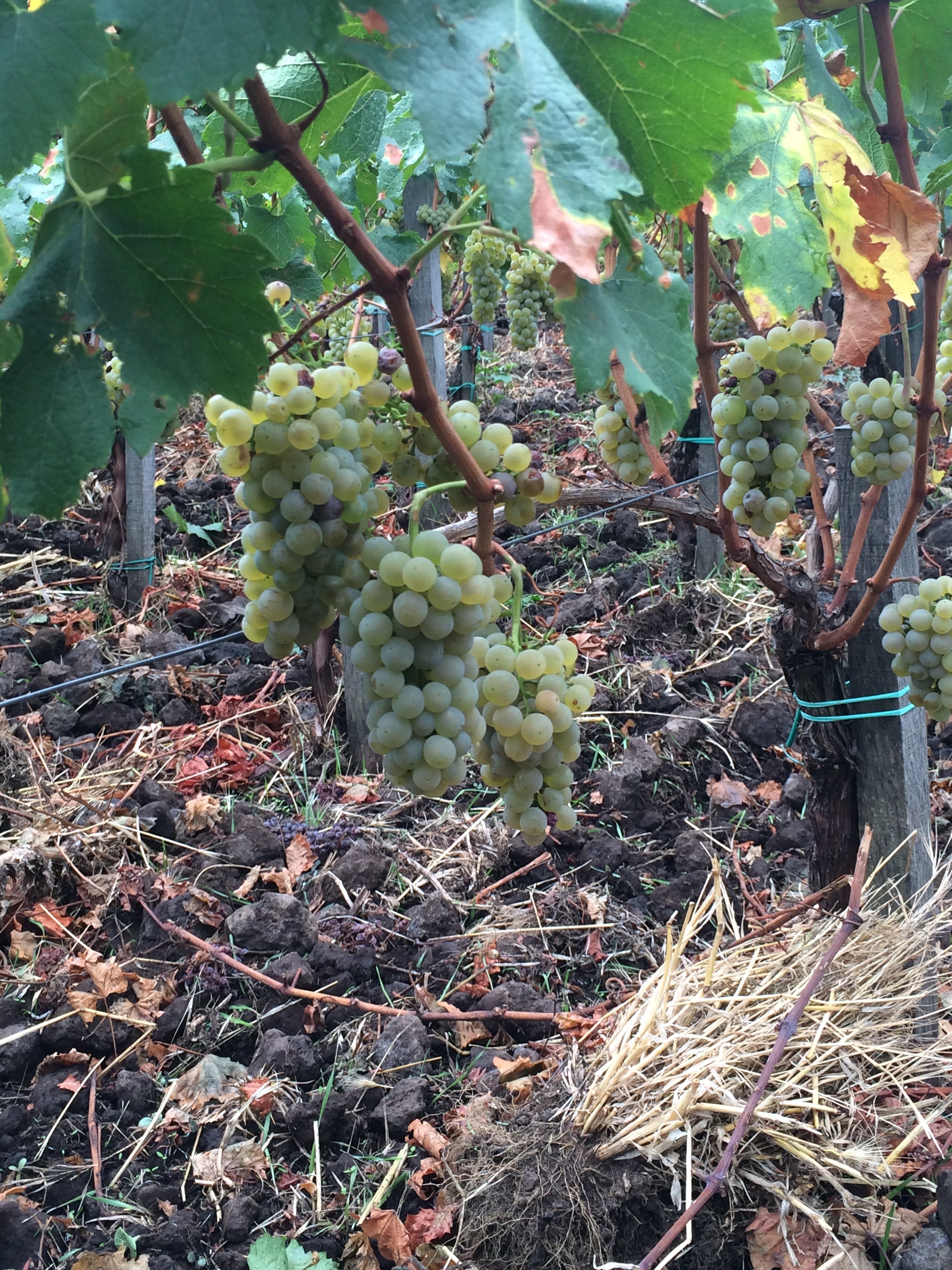 I spent my first few days in Italy down on Mt. Etna, observing the harvest at Passopisciaro. Andrea Franchetti, its owner, showed me how the color of the leaves and slope of the hills could allow him to predict what would be ready first – the vines with yellowed leaves were already bare, the sugars directed to the grapes on the areas where the soil wasn’t as rich (the deeper the green, the later the ripening goes his approach); and where there were depressions in the vineyard, however slight, those grapes too were still left to ripen, while the edges of the rows on higher ground were already plucked. We tasted from plant after plant, and for the first time I could really understand how much a single vine could vary from its neighbor. Some were just on the cusp of ripeness, with sweet juices bursting in my mouth and the seeds easily falling apart, where as others still maintained a tart, green edge.
I spent my first few days in Italy down on Mt. Etna, observing the harvest at Passopisciaro. Andrea Franchetti, its owner, showed me how the color of the leaves and slope of the hills could allow him to predict what would be ready first – the vines with yellowed leaves were already bare, the sugars directed to the grapes on the areas where the soil wasn’t as rich (the deeper the green, the later the ripening goes his approach); and where there were depressions in the vineyard, however slight, those grapes too were still left to ripen, while the edges of the rows on higher ground were already plucked. We tasted from plant after plant, and for the first time I could really understand how much a single vine could vary from its neighbor. Some were just on the cusp of ripeness, with sweet juices bursting in my mouth and the seeds easily falling apart, where as others still maintained a tart, green edge.

I spent time with Eduardo, the young Spanish winemaker, who showed me the experimental fermentation of Sauvignon Gris, with its rich palate and beautiful color like that of cooked salmon, and walked me through the daily records that he keeps of the various tanks undergoing fermentation, full of notes on pH, sugars, and how far along the fermentation process has gone. Andrea joined us, and we tasted Chardonnay from various containers: tart juice from an early picking; fresh juice that had not yet begun to ferment; a small amount in barrique that was slightly riper and thus had lower acid – malolactic fermentation had already begun, and the juice exposed to new wood during fermentation had begun to take on a slight coffee note that will bring a hint of spice to the final blend.


I watched members of the harvest team working the vines, snipping away at bunches as part of a late green harvest – the same team also takes in the grapes, so their priorities change daily. The grapes were strategically snipped, so that those closest to the trunk were left to hang, provided that the remaining bunches had air to breathe around each one – a maximum of 7 were left on the lesser plants, 5 on the ones prepared for the higher-end vines. I watched how the different vineyards had to be worked, either when clipped or sprayed, based on how the vines were trained and whether they were on plains or terraces, each additional step adding to the time and cost of labor. Vincenzo talked to me about the force of the moon, how ripening quickens as it waxes and slows as it wanes. I was rapt.

My last day on Etna began with a hike up the Guardiola contrada just after dawn to taste the last of the Chardonnay grapes with Eduardo, Vincenzo, and Letizia, who leads the sales in Asia. Once we reached the right altitude, Vincenzo and Eduardo moved swiftly down the lines of vines, testing the sugars and tasting. Many were still under ripe, but there were a few areas that had reached their peak. I tested the sugars myself in one vineyard, squeezing the grapes juice across the glass panel of the Babo meter and checking to see if the sugars from various bunches had reached or passed 19.5 degrees. Then I watched as they pulled out rolls of tape and marked the parcels that needed to be picked versus left on the vine, tossing it back and forth between them across the rows.

Andrea had described the harvest on Etna to me as “fussy” because every strata of volcanic soil is so different, but I had to see it to really understand how in-depth and meticulous the process really is; how sporadically the vines were being picked; how whole sections were marked off with tape, showing where the grapes not yet ripe still hung heavy on the vines, these amidst rows of tightly packed vines that had already been relieved of their burdens. The care that goes into finding the optimal ripeness of each grape is what makes these wines so lovely.
